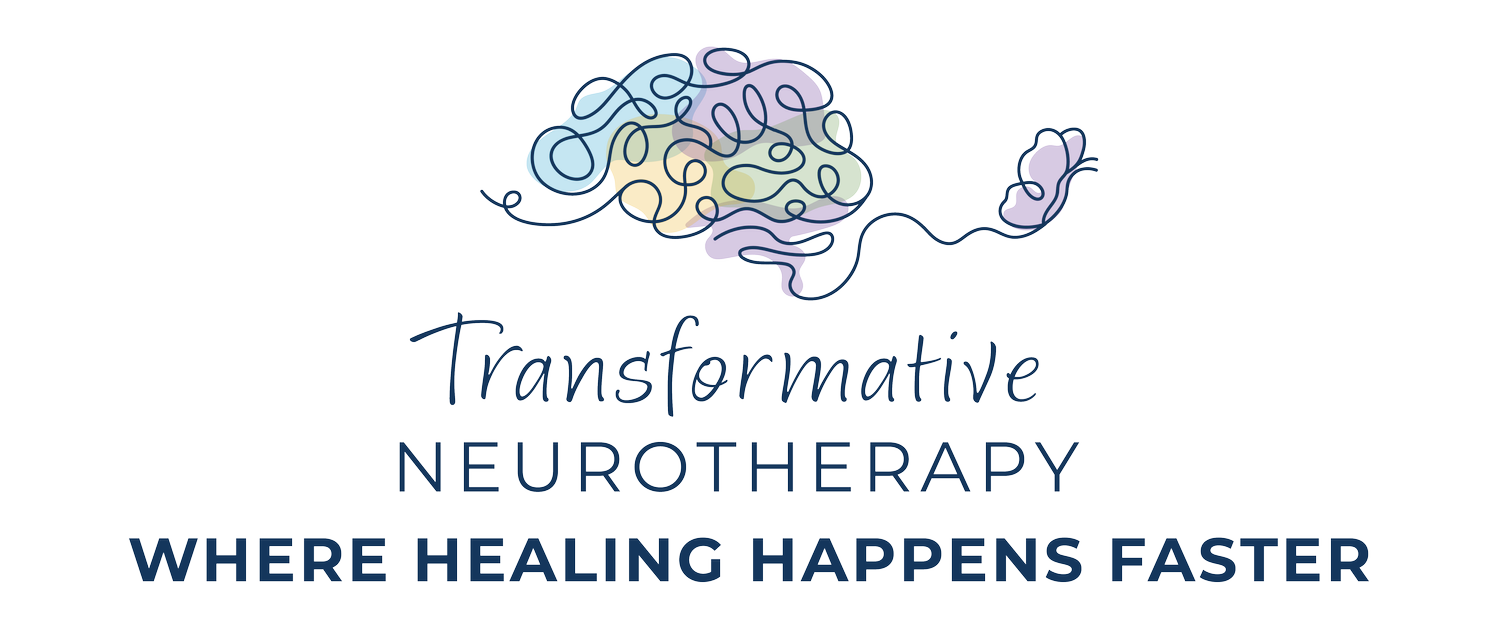PREPARING FOR YOUR EEG (Podcast Episode 7)
by Heather Putney, PHD, LMFT, CSAT-S, QEEG-DL
EXECUTIVE DIRECTOR, FOUNDER
Untethered Therapy and Transformative Neurotherapy
Preparing for an EEG isn’t about jumping through hoops—it’s about giving your brain a fair stage.
Our goal is to capture a clean view of your baseline, not a snapshot distorted by caffeine spikes, poor sleep, or hair products that interfere with the sensors. We often tell patients to treat it like performance day: you want steady energy, calm nerves, and minimal noise in the signal.
That preparation starts 12 to 24 hours ahead. We recommend skipping caffeine for at least half a day so we don’t mask fatigue or anxiety that may be part of your story. Ideally, we schedule morning appointments when alertness is naturally strongest, or we align with your personal rhythm if you’re a late riser. Hydration is key, and breakfast matters—choose protein-rich options and pair carbs with eggs, yogurt, or tofu for stable fuel. Sugary solo acts don’t support the kind of brain activity we’re trying to observe.
The technical setup matters just as much as your routine. Clean, dry hair with no product helps electrodes pick up brain activity instead of slipping across oils or conducting stray moisture. Extensions and heavy styling can complicate placement, so we advise allowing extra time or preparing for adjustments. Once you’re in the chair, we walk you through the gear—the cap, the ear clips that help distinguish room noise from real brain signals, and the process for minimizing artifact. You’ll practice any tasks before recording to reduce nerves and avoid performance errors that muddy the data. Anxiety shows up as faster waves and muscle tension around the eyes and jaw. We watch for those signs and help you relax, adjust posture, and settle your gaze so the resting-state segments reflect you at ease—not you on edge.
EEG data collection typically includes four segments: eyes-open rest, eyes-closed rest, an auditory task, and a visual go/no-go task. Resting segments capture your idle networks and the balance of frequencies that relate to alertness and calm. The tasks reveal how your brain processes sounds and visuals, filters distractions, and controls impulses. Together, these segments show how information flows, where it slows, and whether certain regions overwork while others under-contribute. This combined view is especially helpful for concerns like brain fog, chronic stress, attentional drift, fatigue, and recovery after burnout. It also helps us see whether your reliance on caffeine is compensating for sluggish baseline alertness, which can guide training, sleep hygiene, and nutrition changes.
What if life sabotages your prep? We can still record the EEG, but the question becomes whether the readout reflects your baseline or a temporary state. A sleepless night might cause you to doze during tasks, blurring signals linked to attention and executive control. If that pattern is typical for you, it may still be representative data. If it’s unusual, rescheduling protects the integrity of your results. Illness and new medications are also reasons to wait—short-term physiology can distort rhythms and lead to misleading conclusions. We always prioritize quality over speed. One excellent session beats two hurried ones, and cleaner data means clearer guidance for therapy, neurofeedback, or lifestyle changes.
Kids follow the same protocol, with extra patience. We let them touch the cap, see the ear clips, and practice tasks. A slower pace and clear expectations help them relax, which reduces eye blinks and jaw tension that can flood recordings with artifact. Parents can help by modeling calm, ensuring a good breakfast, and keeping caffeine out of the mix. For adults, the same care applies: arrive hydrated, fed, rested, and curious. Ask questions. If something feels off—head cold, poor sleep, unusual stress—let us know. Trust grows when we adapt to you, and good science respects the variables that shape your brain’s day-to-day.
The payoff of careful preparation is more than a tidy chart. It’s a sharper map of your cognitive strengths, pressure points, and the paths that lead to improvement. With a solid baseline, we can spot patterns tied to anxiety, sleep disruption, or attentional bottlenecks and craft plans that build resilience rather than patch symptoms. That’s how we move from guesswork to targeted change: small habits before the test, steady energy during the test, and smarter choices after the test. That’s how your brain stops working against you and starts powering you forward.
At Transformative Neurotherapy, we believe safety, precision, and collaboration make the strongest foundation for brain-based care. Every EEG and neuromodulation session begins with understanding your unique baseline and tailoring the process to your goals. If you’re curious about how EEG mapping can inform your treatment plan—or simply want to learn more about our science-guided approach to neurotherapy—we invite you to reach out and explore what’s possible when your brain’s story is seen clearly.
